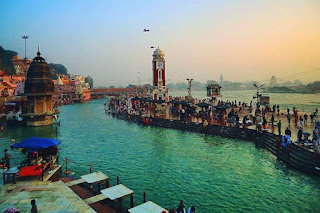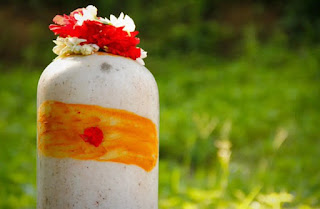HARIDWAAR: The Door to Hari

One of the Sapta Puri, it was originally known as Kapila, after Kapil Muni who lived here. Other names of Haridwaar were Gangadwar and Mayapuri. The city finds mention in the Vana parva of the epic Mahabharata.


It was here that the salvation of 60,000 ancestors of Bhagiratha took place when he brought Ganga river down from heaven.His ancestors were,thus,freed from the curse of Kapil Muni. Even now, devout Hindus bring here the ashes of their departed family members, in hope of salvation

It was at Kankhal (in Haridwar) that Daksh Prajapati, the father of Devi Sati, performed yagya and the disrespect shown by him towards Mahadeva compelled Sati to burn herself in the yagya kund. The Daksheshwar Mahadev temple at Kankhal, built in 1810, is located in Kankhal.

The Sati Kund in Kankhal is a dried up kund,which is believed to be the one where Mata Sati immolated herself. The kund is on the banks of Ganga and finds mention in Mahabharata.


The Saptarishi Kund in Haridwar was sanctified by the 7 rishis whose devotion compelled the Ganga to divide herself into seven channels. On the Kushavarta Ghat, Dattatreya did tapasya by standing on one leg for 10,000 years. This ghat is now used for pinda daan.







Haridwar is most famous for Har ki Pauri. Here, the river Ganga enters the sacred Brahmakund from one side and exits from the other. Vishnu is said to have left his footprint on the stone that is set in the upper wall of Har Ki Pauri, where Ganga touches it at all times.


Here, the Brahmakund is considered to be the spot where the drops of Amrit fell from the sky, while being carried in a pitcher by Garuda after the Samudra Manthan. Kumbha Mela takes place here every twelve years and the Ardh Kumbh Mela takes place every six years.


The sacred ghat of Har ki Paudi was constructed by King Vikramaditya (1st c BC) in memory of his brother Bharthari who came to Haridwar and meditated on the banks of the holy Ganges. Every evening thousands converge at Har ki Paudi to witness the divine Ganga aarti.


Situated near Har ki pauri is a tank built by Pandava Bhima. During exile, when Draupadi was thirsty, Bhima struck his knee on the ground. A depression was created which was filled with water. This is why it is called as Bhimgoda (goda means knee).











Comments
Post a Comment